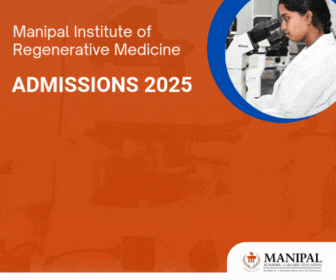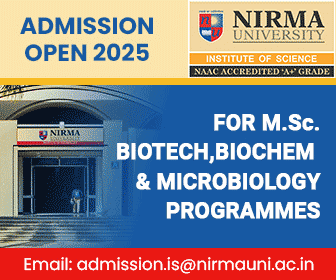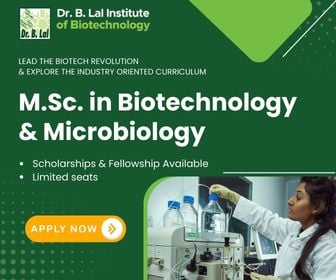CSIR-NET and DBT-BET Merged – Key Takeaways & What Lies Ahead for Future Aspirants
Introduction:
The Council of Scientific and Industrial Research (CSIR) and the Department of Biotechnology (DBT) have jointly announced a proposal to merge the separate CSIR-UGC-NET Life Sciences exam and the DBT-BET Biotechnology exam into a single, unified Life Sciences & Biotechnology (LS & BT) NET. Published on 8 May 2025, this notification opens a consultation window until 7 June 2025, inviting stakeholders to review and comment on the proposed revised syllabus
1. Original Notification: What You Need to Know
- Purpose: Streamline overlapping topics, reduce redundancy, and align the exam with modern scientific advances and industry needs citeturn0file0.
- Key Dates:
- Notice Published: 8 May 2025
- Feedback Window: 8 May – 7 June 2025
- Action Required: Academic institutions, researchers, and candidates are urged to review the detailed draft syllabus and submit feedback via the online portal.
2. Highlights of the Proposed Combined Syllabus
The new LS & BT syllabus comprises 14 integrated sections covering:
- Structure and Function of Biomolecules
- Cellular organization and microbial physiology
- Fundamental processes (DNA/RNA/protein machinery)
- Cell Communication and Cell Signaling
- Developmental biology
- System Physiology – Plant
- System Physiology – Animal
- Inheritance Biology
- Evolution & Diversity of Life Forms
- Ecology, and Behavioral biology
- Bioprocess engineering & industrial biotechnology
- Biochemical Engineering and Industrial Biotechnology
- Advances in biotechnology
- Methods in biology
3. Comparing Old vs. New: A Side-by-Side
| Section | New LS & BT | Old CSIR-NET Life Sciences | Old DBT-BET |
| Biomolecules & Biophysical | Unified coverage of structure & function of biomolecules, metabolism & kinetics | Similar scope | Part of General Biotechnology |
| Cell Biology | Single comprehensive section, New topic included in this unit: Nucleus dynamics,apoptosis, necrosis, autophagy, antimicrobial resistance (AMR). | Separate, overlapping | Covered under prokaryotic & eukaryotic cells |
| Fundamental Processes | DNA/RNA/protein in one list, Topics included in this section:ribozyme, riboswitches, non-coding RNA, protein trafficking and transport, protein degradation, epigenetic regulation.) | Standalone section | Under Cellular Processes |
| Developmental Biology | No change | No change | Not included |
| Plant & Animal Physiology | Separate sections but few topics included: Innate immunity & metabolic enginnering (Plant Physiology); Concept of metaorganisms/holobionts, Interorgan communication and energy homeostasis; metabolic health and disorders (Animal Physiology) | Two separate sections | Distributed across agricultural & animal biotech, not much focus animal system physiology. |
| Genetics & Inheritance | Mendelian to population genetics and inheritance | Genetics & Evolution (population genetics) are separate | Under Genetics, Phylogeny & Evolution |
| Evolution & Diversity of Life Forms | Evolution & Kingdoms of life combined | Evolution separate section from Taxonomy & Plant & animal classification | Under Evolution & Marine Biotechnology |
| Ecology & Behavioural Biology | Act & Policies & Behavioural ecology added | Almost same | Agricultural Biotechnology (section Biodiversity); Behavioural ecology not present |
| Bioinformatics & Computational | New standalone emphasis | Not present | Embedded in genomics & proteomics |
| Biochemical Engineering and Industrial Biotechnology | Newly added section | Not present | Included in Biotechnology, Biochemical Engineering and Industrial Biotechnology |
| Advances in Biotechnology | Recombinant DNA Technology, diverse topics included for Medical, Animal, Agriculture, Environmental. Marine Biotechnology added. | RDT under a separate unit, Not include much diverse topics | Recombinant DNA Technology, agricultural biotechnology, environmental biotechnology, Marine Biotechnology |
| Methods in Biology | Integrated with Omics & IPR, Biosafety and Bioethics | Methods separate & IPR, Biosafety and ethics not included. | Scattered; separate IPR & ethics section |
| Exam Format | Single unified exam | Single exam | Two-part MCQ (General + Specialized) |
This merger harmonizes fundamental biology with emerging biotech applications, removing duplication and ensuring candidates are tested on an interdisciplinary curriculum.
4. Key Takeaways for Aspirants
- Broader Scope: Expect questions spanning basic cell biology through industrial biotech and computational methods.
- Depth & Integration: Topics once tested separately will now interconnect—be prepared for interdisciplinary questions.
- New Emphases:
- Bioprocess engineering
- Bioinformatics & AI-based structure prediction
- Metabolic & synthetic biology
- System Biology & Emerging therapeutics (organoids, precision medicine)
- Exam Strategy: Focus on core concepts, practical applications, and emerging trends; revise overlapping areas less frequently tested previously.
5. How to Prepare: A Roadmap for Future Applicants
- Review the Unified Syllabus: Download and annotate the new LS & BT draft syllabus, noting additions and removed redundancies.
- Strengthen Fundamentals: Revisit key principles in molecular biology, physiology, and genetics; solve topic-wise MCQs from both CSIR-NET and DBT-BET archives.
- Embrace Computational Tools:
- Practice sequence analysis (BLAST, FASTA, MSA, etc.)
- Explore basic systems-biology modeling
- Practice sequence analysis (BLAST, FASTA, MSA, etc.)
- Hands-On Biotech Applications:
- Understand bioprocess design and scale-up calculations
- Review case studies in genome editing and cell therapy
- Stay Updated on Advances:
- Follow recent literature in synthetic biology, organoid research, and immunotherapies.
- Mock Tests & Time Management:
- Simulate the unified exam format, mixing questions from both legacy papers.
- Allocate practice time proportional to new weightage (e.g., bioinformatics, engineering topics).
Conclusion:
The proposed merger of CSIR-NET Life Sciences and DBT-BET Biotechnology marks a pivotal shift toward an integrated examination that mirrors today’s interdisciplinary research landscape. Aspirants who adapt their preparation strategy to this unified syllabus—balancing foundational knowledge with emerging biotechnology trends—will be well-positioned for success in the next generation of NET exams.
Click here for the official notification
Click here for the proposed syllabus
































The syllabus is too much burden for students with core subjects. Either keep options in the units or increase the number of seats. Simply expanding the syllabus is not going to help.